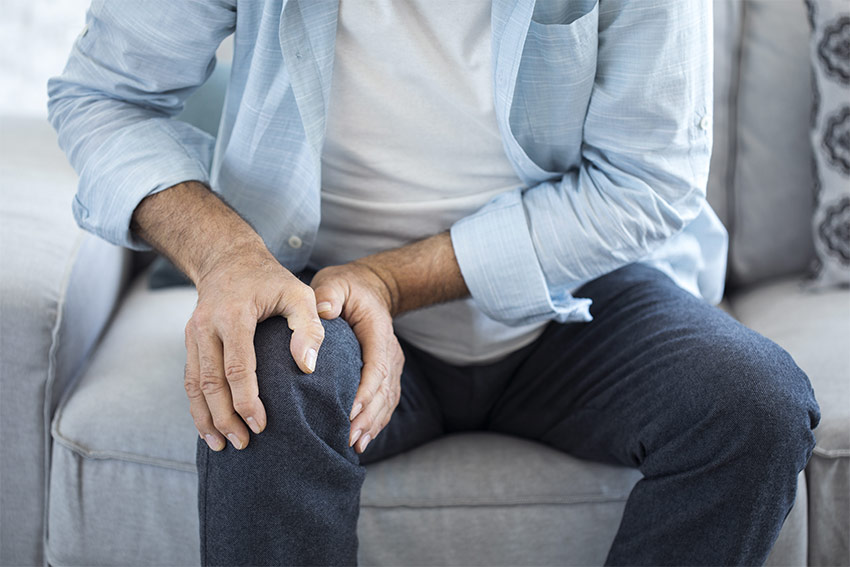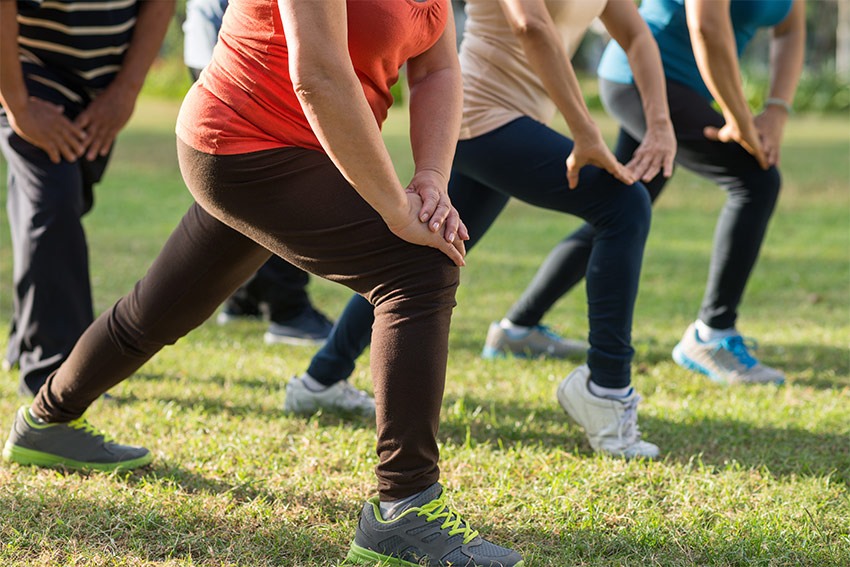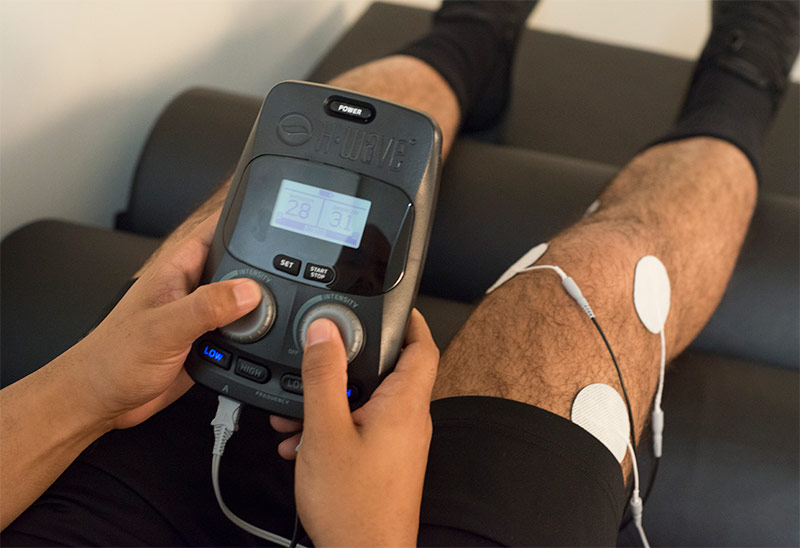Five Non-Invasive Knee Pain Remedies

The knee is an extremely complex joint in the body and many people can struggle with knee pain for a variety of reasons worldwide. Knee pain can not only limit your functionality and range-of motion but may also lead to a reduced quality of life if you are no longer able to do the things you love or regular day-to-day activities. In addition, treating knee pain can also significantly increase your health care costs. However, using non-invasive at-home remedies may allow you to reduce your pain without high medical costs or experiencing harmful pain medication side effects.
Try these non-invasive, at-home knee pain-remedies:
1. Weight Loss & Diet
Several studies have shown that a reduction in weight can lead to a reduction in knee pain. Often, people who are overweight will have higher levels of knee pain due to increased stress on the joint. The force across the knee is amplified with more weight – it is equal to one and a half times your body weight which means that if you weigh 200 pounds, you put 300 pounds of pressure on your knees when walking across level ground. Walking at an incline or squatting down to pick up an object can increase the force up to five times your body weight, therefore increasing the pressure placed on your knee which can lead to pain. If weight could be a contributing factor to your pain, you may want to discuss your diet and possible weight loss strategies with your primary care physician. One simple rule to help manage body weight is eat until you’re simply satisfied, rather than until you’re full.
2. Tai Chi
Tai Chi is a Chinese form of exercise that improves balance and flexibility through the use of both mind and body. Studies have shown that the practice of Tai Chi aids in reducing knee pain through its slow, flowing movements. The soft movements in this healing art, gently release knee stiffness thus reducing pain.

3. Stretching
Our bodies are an intricate balance of muscle, bone, and tissue. Stretching muscles in your legs can help to reduce the burden on your knees. The hips, glutes, hamstrings, calves, and quads work together to support the proper functioning of your knee. When one area is compromised by weakness or tightness, your knee can suffer. The muscles and tendons from the hips to the feet work in conjunction with one another to support your joints as you move. Reducing tightness through stretching the hips can reduce the level of pain in the knee because the majority of muscles that affect the knee begin in the hip area. Keeping all of your leg muscles loose and limber better supports and protects your knees by allowing the joint to move more freely and fluidly.
4. Exercise
Daily exercise is imperative for the reduction of short or long-term knee pain as it helps to restore strength and mobility. While you may not feel like exercising, it is important to keep the joint moving. Keeping the leg and knee stationary to avoid pain will ultimately cause the joint to stiffen which will only make the problem worse. Inactivity causes the cartilage between joints to shrink and stiffen often increasing pain. Exercise helps the joint by strengthening the muscles and tissue around the area as well as increasing flexibility. Stronger muscles and tissues are better able to support your knee resulting in less pain. Researchers have found that exercise helps to decrease pain, improve physical function, and increase the overall quality of life.
5. H‑Wave Therapy

Sometimes when knee pain is too overwhelming, exercise or even stretching may not be practical options. This is when a non-invasive treatment like H‑Wave can really help. In order to bridge the gap between immobility and functional restoration, H‑Wave offers powerful long-lasting pain relief that’s drug-free, with no harmful side effects, unlike pain medications. H-Wave not only has a setting that provides an immediate analgesic effect; it also has a rehabilitative setting which increases blood flow and removes the built-up wastes surrounding the area, which can often be at the root cause of pain and congestion. H‑Wave is available for home use, which means you can use it 24/7, wherever and whenever pain relief is needed.
To learn more about how you can acquire an H‑Wave, click here.
While there are many different variations of knee pain, it doesn’t have to be a chronic part of life. Each of the non-invasive remedies listed above can help to reduce knee pain without causing harmful side effects. Following these home remedies to relieve knee pain can help you get active again and back to your life instead of being bogged down by pain. In addition, as with any chronic condition, it is always recommended to consult a physician before incorporating any new treatment regimen.
You may also like:
Is There A Better Predictor for Knee Osteoarthritis?
Static and Dynamic Stretching – The Importance of Both
4 Nutrients That Help With Bone & Joint Health You May Not Know